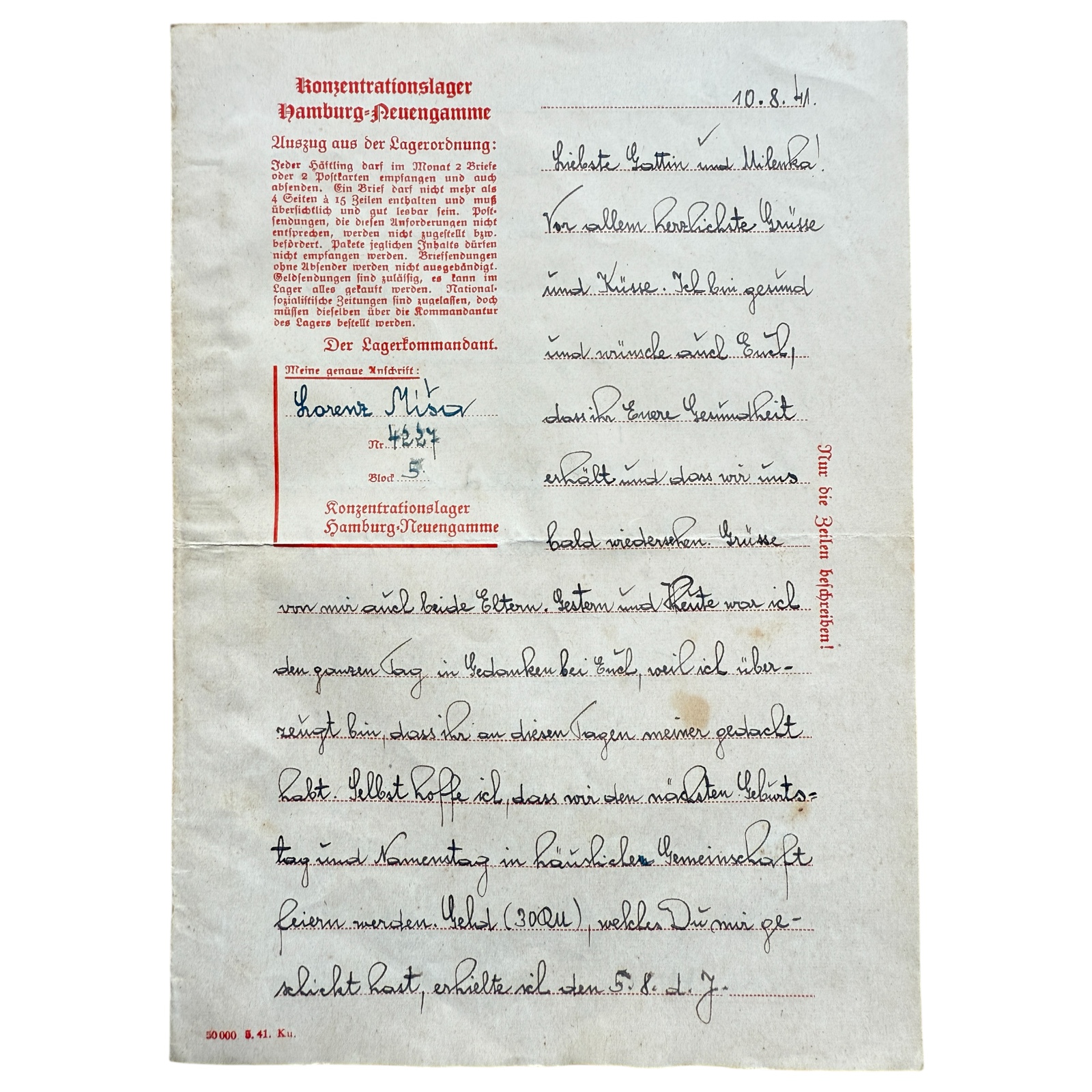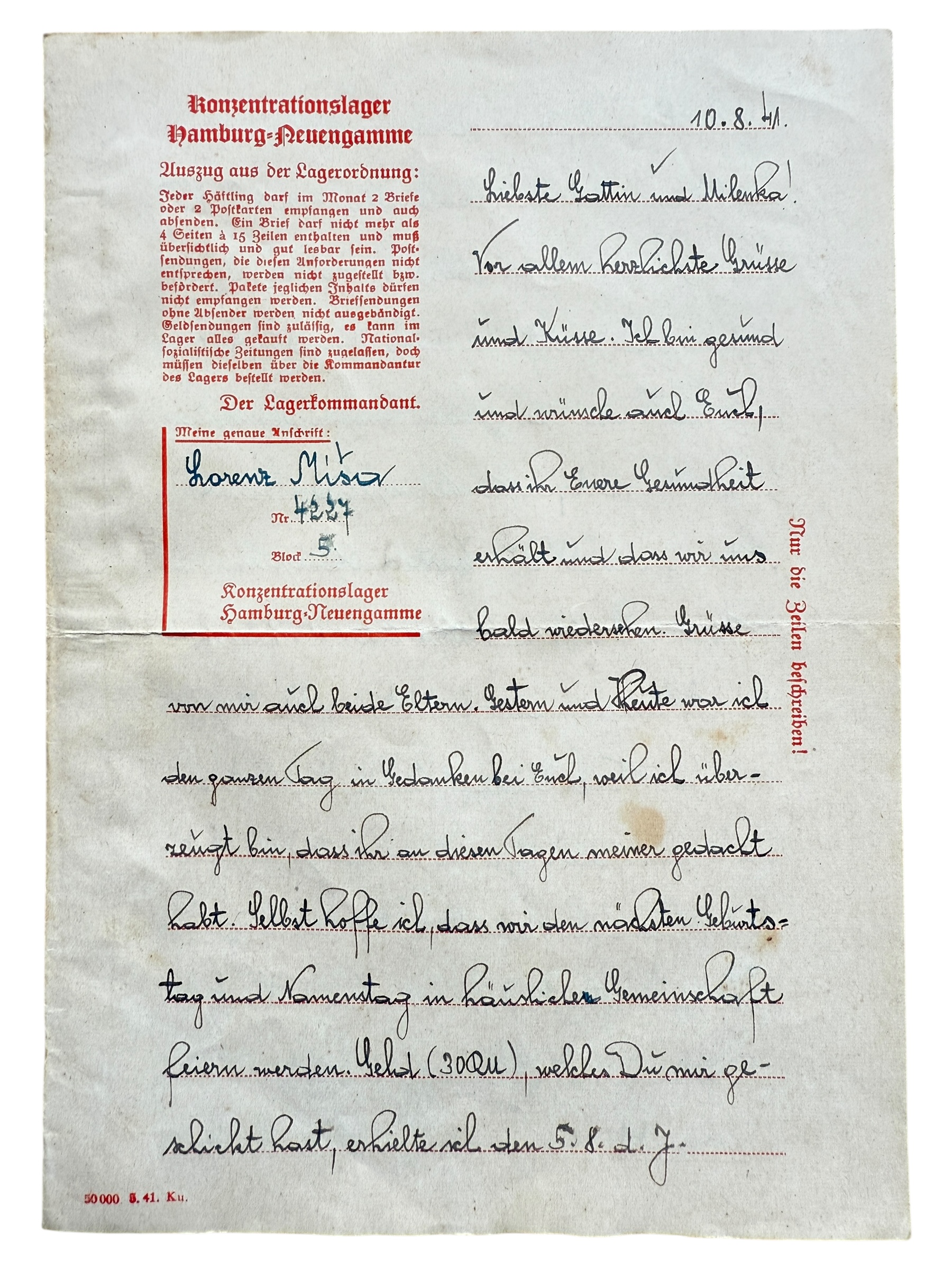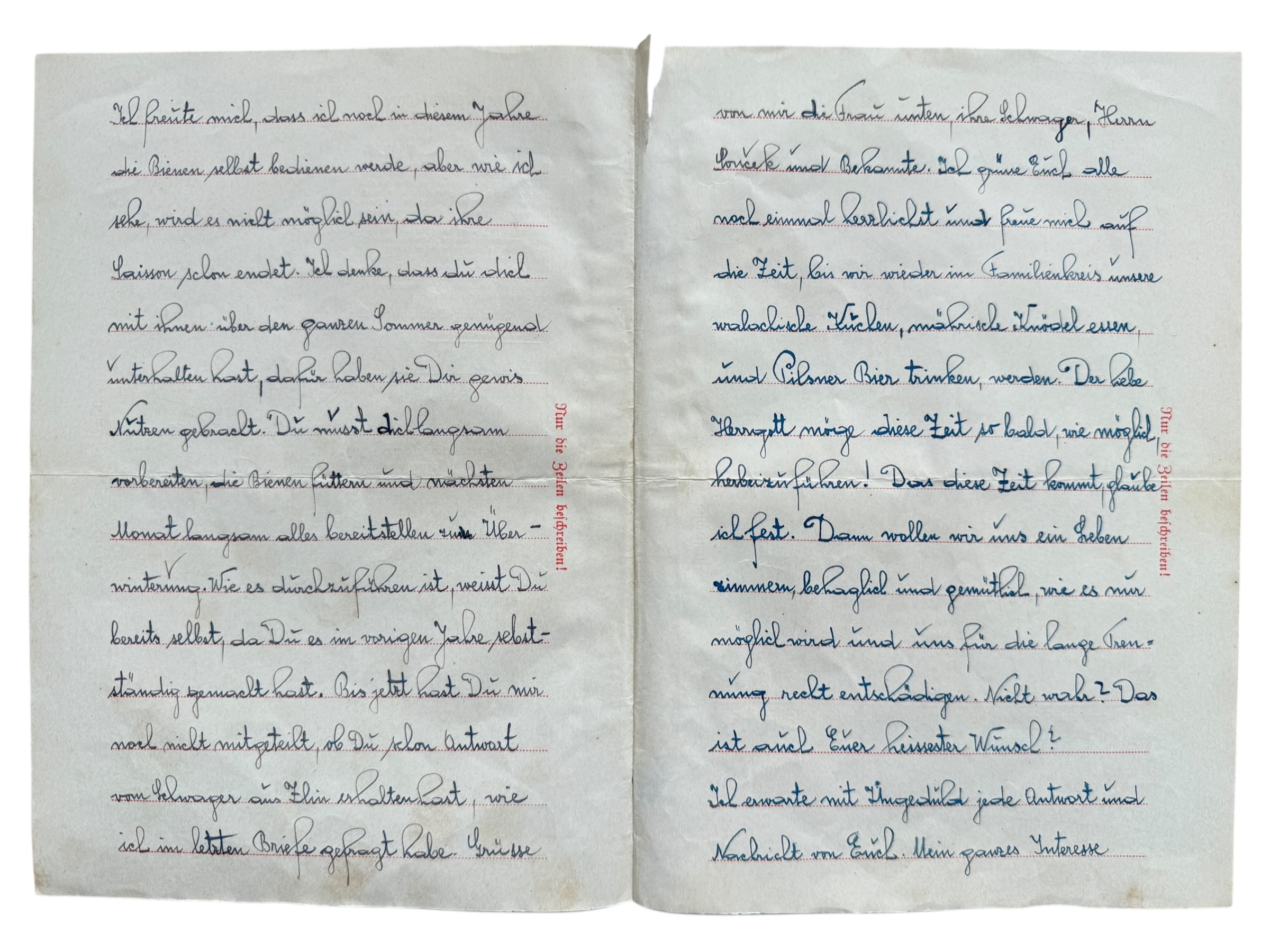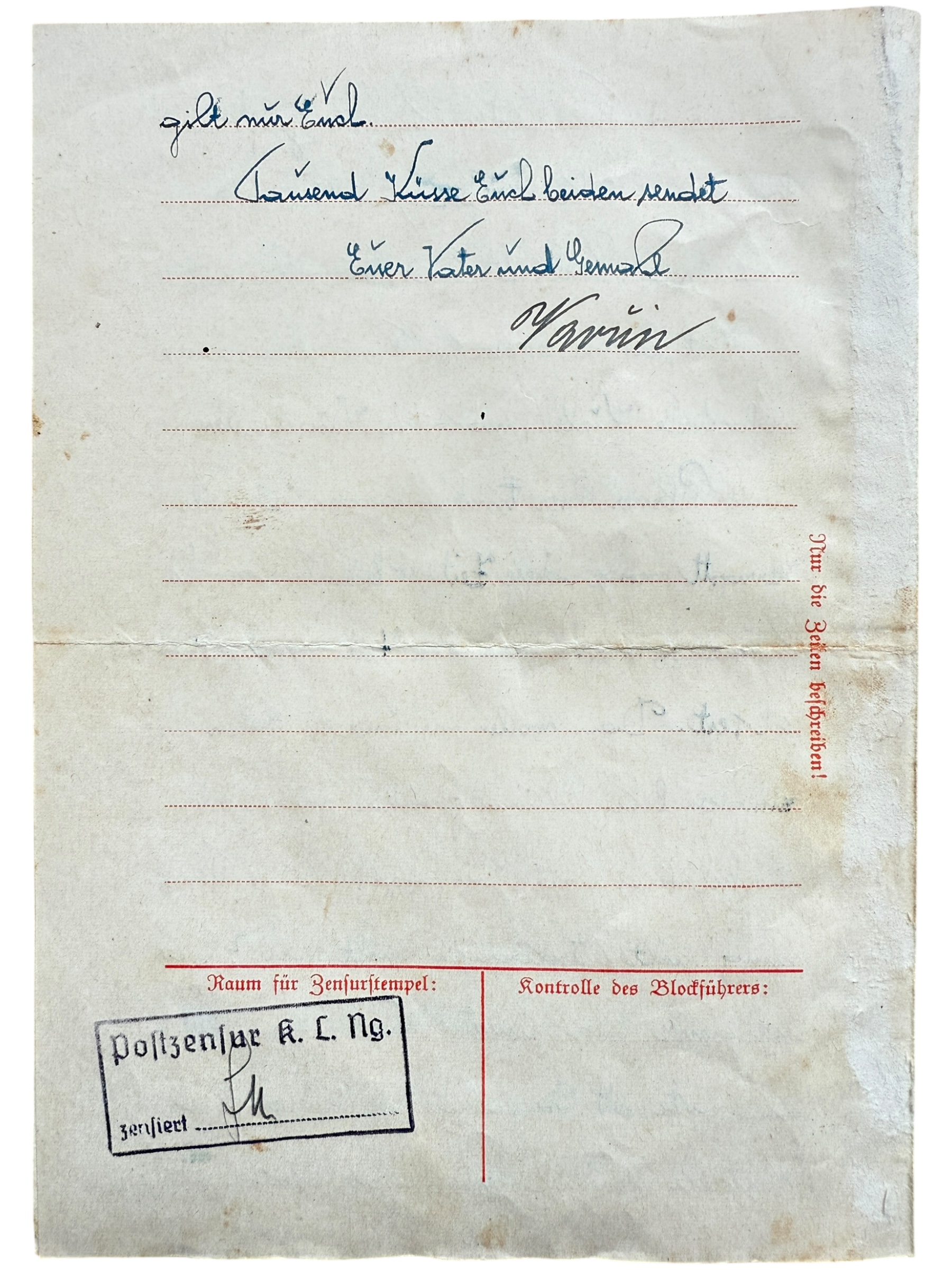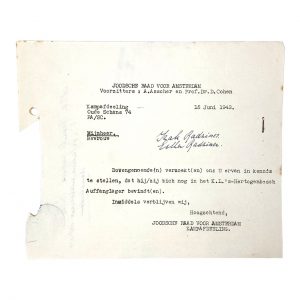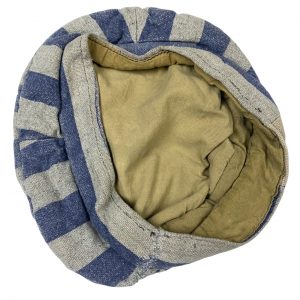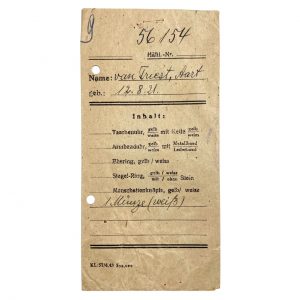Neuengamme – Letter from Misa Lorenz
Misa Lorenz was born in August 1894 in South Moravia, near the borders of Austria and Slovakia.
In 1940, he was arrested as a suspected enemy of the Nazi state.
He was imprisoned in the Gestapo prison in Brünn (Brno), and later deported to Dachau concentration camp (Category I KL – Arbeitslager), where he was assigned prisoner number 21,801.
In 1941, he was transferred to the Neuengamme concentration camp near Hamburg, where he remained for three years.
There, he was issued a new prisoner number: 4227.
In March 1944, he was again transferred, this time to the infamous Mauthausen-Gusen camps.
At Gusen, he received prisoner number 56,268.
On February 25th, 1945, just months before liberation, Misa Lorenz died in Gusen.
He wrote this letter on August 10, 1941, from the Neuengamme concentration camp to his wife and daughter while he was imprisoned in block 5.
Neuengamme 10.8.1941
Dearest wife and Milenka!
First of all, my warmest greetings and kisses.
I am in good health and I wish and hope that you are keeping your health as well.
May we see each other again soon, also greetings to both of my parents.
Yesterday and today I spent the entire day in thoughts of you, because I’m convinced that you were thinking of me on these days.
I keep hoping that we will celebrate the next birthday and name day together in a domestic setting.
The package (300 AU) that you sent me, I received on August 5th of this year.
I fear that this year I won’t be able to inspect the bees myself.
But from what I hear, that won’t be possible anyway, since the season is already over.
I imagine you spent a lot of time with them over the summer, and I’m sure they’ve rewarded you for that.
You should slowly begin preparing things in your garden, and over the next month gradually get everything ready for the winter.
You already know how to do this, since you handled it yourself last year.
So far you haven’t told me whether you passed the message to your mother, as I asked in my last letter.
Send my greetings to the women down in the settlement, to Mr. Brock and acquaintances.
I so look forward to embracing you all again and to the time when we can return to our family circle, our beloved women, male friends, and drink Pilsner beer together.
May the beloved past bring forth this new time as soon as possible.
That this time will come I firmly believe.
Then we will build a life together, peaceful and cozy, as much as is possible and may it compensate us for this long period of deprivation.
Don’t you agree?
Isn’t that “a pious wish”?
I await every answer and message from you with impatience.
All my thoughts are with you alone.
A thousand kisses to both of you, sent by
Your father and husband,
Lorenz.
Neuengamme Concentration Camp
The Neuengamme concentration camp, located near Hamburg in Germany, was one of the largest Nazi camps in northwestern Europe.
It was established in 1938 as a subcamp of Sachsenhausen and became an independent camp in 1940.
Neuengamme was classified as a Category II KL (Konzentrationslager), intended for political prisoners, resistance fighters, intellectuals, and others regarded as enemies of the Nazi regime.
The camp functioned primarily as an Arbeitslager (labor camp), where prisoners were forced to work under inhumane conditions, including for the war industry and in brick factories.
Between 1938 and 1945, more than 100,000 people from across Europe were deported to Neuengamme.
It is estimated that approximately 42,000 of them died due to exhaustion, disease, abuse, or execution.
At Neuengamme and its satellite camps, around 1,600 prisoners from Czechoslovakia were held.
About half of them were women, mainly Jewish women.
Neuengamme was liberated in May 1945.
